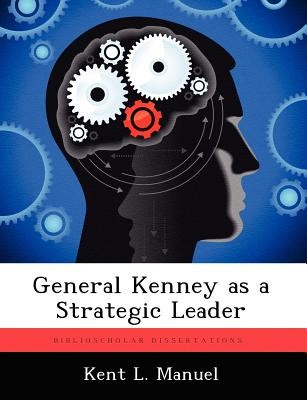
- We will send in 10–14 business days.
- Author: Kent L Manuel
- Publisher: BiblioScholar
- ISBN-10: 124957952X
- ISBN-13: 9781249579526
- Format: 18.9 x 24.6 x 0.2 cm, softcover
- Language: English
- SAVE -10% with code: EXTRA
Reviews
Description
General George C. Kenney was the Allied Air Commander in the Southwest Pacific Theater during World War Two. As commander of Fifth Air Force, General Kenney reported to General MacArthur, and operated as the Joint Force Air Combat Commander. General Kenney gained command of Fifth Air Force in July 1942, inheriting a demoralized and beaten force with few resources with which to work in a theater designated as the lowest priority of the war effort. Yet, General Kenney managed to return his troops to the offensive, retain the initiative, and ultimately lead the allied air forces to victory over Japan. The paper analyzes General Kenney's strategic leadership style, framed within the six strategic leadership tasks defined in the Army's draft FM 22-1-3. These tasks are: provide vision; shape culture; manage joint, combined, and interagency relationships; manage national-level relationships; represent the organization; and, manage change. The paper concludes that General Kenney demonstrated all the strategic leadership tasks and his experiences are relevant to learning about leadership today.
EXTRA 10 % discount with code: EXTRA
The promotion ends in 18d.03:44:55
The discount code is valid when purchasing from 10 €. Discounts do not stack.
- Author: Kent L Manuel
- Publisher: BiblioScholar
- ISBN-10: 124957952X
- ISBN-13: 9781249579526
- Format: 18.9 x 24.6 x 0.2 cm, softcover
- Language: English English
General George C. Kenney was the Allied Air Commander in the Southwest Pacific Theater during World War Two. As commander of Fifth Air Force, General Kenney reported to General MacArthur, and operated as the Joint Force Air Combat Commander. General Kenney gained command of Fifth Air Force in July 1942, inheriting a demoralized and beaten force with few resources with which to work in a theater designated as the lowest priority of the war effort. Yet, General Kenney managed to return his troops to the offensive, retain the initiative, and ultimately lead the allied air forces to victory over Japan. The paper analyzes General Kenney's strategic leadership style, framed within the six strategic leadership tasks defined in the Army's draft FM 22-1-3. These tasks are: provide vision; shape culture; manage joint, combined, and interagency relationships; manage national-level relationships; represent the organization; and, manage change. The paper concludes that General Kenney demonstrated all the strategic leadership tasks and his experiences are relevant to learning about leadership today.


Reviews